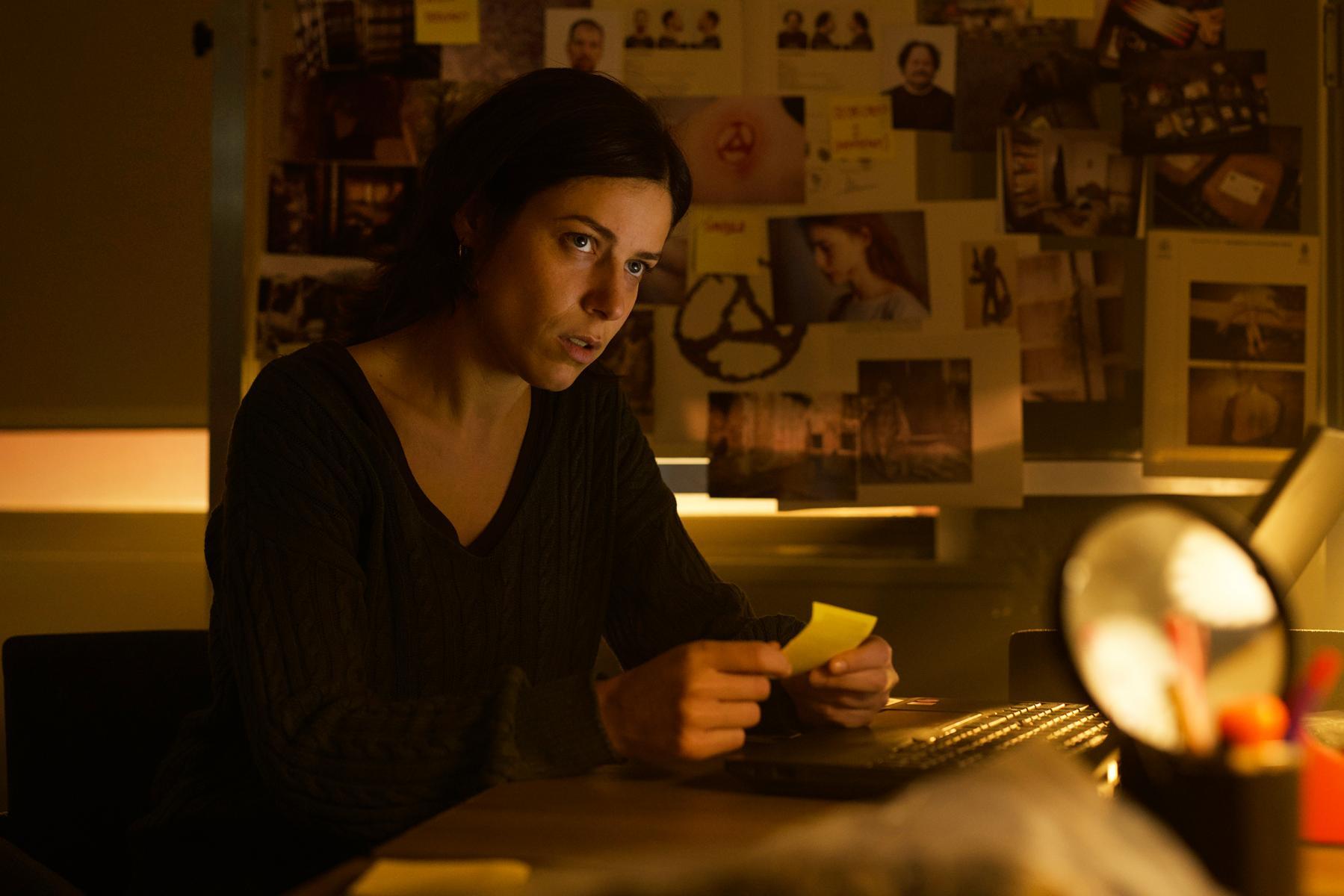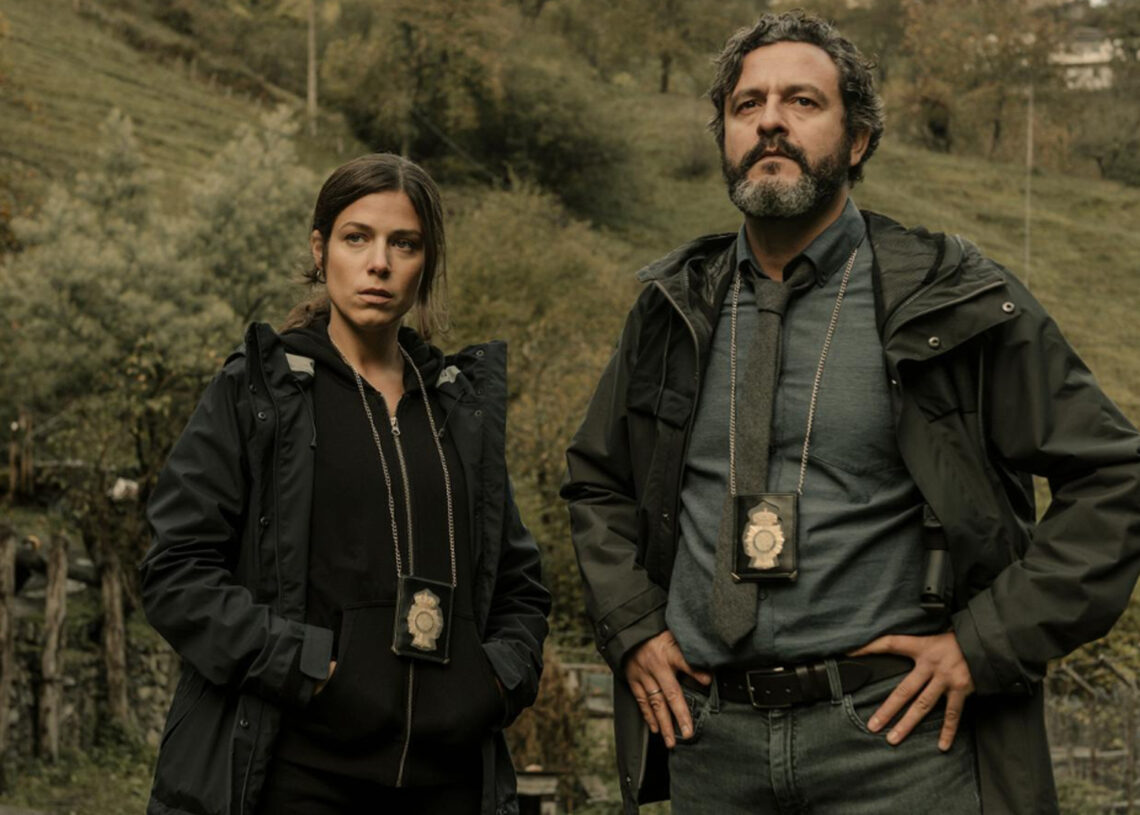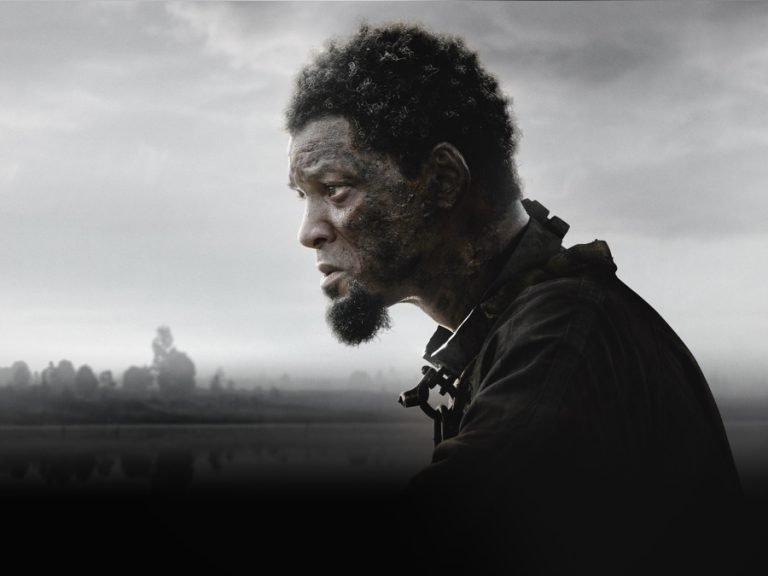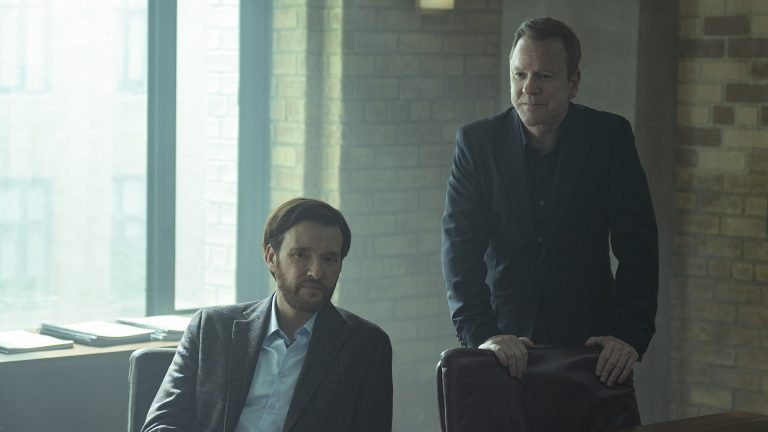The Coronavirus pandemic disrupted lives, no matter which part of the world we lived in. It made us relook at our way of living, habits, and belief systems. Patxi Maezcua’s ‘Infiesto (2023)’ emerges from the same school of thought and presents a change of perceptions during times of calamity through a gripping crime thriller narrative.
The screenplay follows an investigation of an abduction case and, in hindsight, presents a confounding study of how life-threatening calamities impact our school of thought. This new Spanish film stars Isak Férriz, Iria del Rio, and Juan Fernández in the central roles and is now streaming on Netflix.
Infiesto (2023) ‘Netflix’ Movie Summary & Plot Synopsis
The story is set at the beginning of the pandemic. The news about the rampant coronavirus infection becomes public, and Spain is no exception to it either. The country announced a nationwide emergency and mandatory isolation for infected individuals. On the very first day, a young girl runs through the city’s empty streets with her disheveled hair. When the police officers show up next to her, she starts screaming.
Meanwhile, Inspector Garcia (Isak Férriz) and Deputy Inspector Castro (Iria del Río) from the National Police arrive at the station. Covid has hit both their families, and while his mother is sick from it, her partner has been isolated due to his affection. Despite these personal battles, they head to the station to learn about the case.
Based on her fingerprints, the girl’s identity is revealed as Saioa Blanco (Andrea Barrado), who had been missing for over three months. She has binding marks on her feet and hands, which suggest physical violence inflicted upon her.
Then, the two officers meet the police, who found her on the street in that terrible state. There are strict orders to not breach the lockdown due to the virus. So, they have yet another challenge to face during their investigation. Meanwhile, Inspector Castro finds a piece of information that a driver spotted this girl near the San Vicente intersection. Before going there, they meet her mother, who was the only person who hoped her daughter was alive. They inform her that she was kidnapped and is now in a severe condition.
The mother comes to the hospital and gets emotional seeing Saioa. Meanwhile, Commissioner Basterra informs the officers that they are the only two working on this case since all others are assigned duties related to the pandemic. The next day, they reached the intersection where the girl was spotted. They look around the woods and the locality to find a woman sitting in the backseat of a van. A man sees it from a distance and starts running away. They chase him to find out that they are just hippies who are getting high since there is nothing else to do due to limitations.
The officers then go to the hospital and speak with the mental health professional who was assigned because Saioa must suffer from PTSD. The officers wish to talk to the girl about the kidnapper and get more details so that no one else suffers the way she did. The psychologist understands that it will take longer for the girl to be able to speak. Yet, she promises to make the best effort to make Saioa speak like before.
Then the officers head directly to Saioa’s stepfather’s workplace. He was pissed at their department and informed these officers that they had already checked their premises. He seems determined not to provide much help since he does not have an amicable relationship with Saioa because of her bad temper. Back at the office, Officer Garcia stumbles upon a person’s alibi, who was considered a suspect named Manuel Gómez for kidnapping a Korean woman and was called a dog killer. Due to the similarities with Saioa’s case, they head out to find him.
They reach an establishment but find it locked up. So, they break the gates, get inside, and start looking around. After some time, he shows up in front of them by himself with a rifle. They manage to get hold of that gun and then enter his stable. He mentions that the bed inside was for his cousin, who comes in for hunting once in a while. In the earlier case (for which he was considered a suspect), he mentioned it to be a misunderstanding since his sexual desires were not met by her.
While the police head back to the precinct, Inspector Castro gets a call about the forensic report. It mentions that the wound on Saioa’s leg was by a dog, and the sand in her fingernails contained traces of ethanol and tartaric acid. Garcia links it to the stable, and they head back to the dog killer’s place. The officers go inside with their guns only to learn that Manuel has already fled the place.
So, they break down the stable door and search for proof. Eventually, they enter the basement and find a door with a doll stuck on it. It is the same kind that was found on Saioa’s hand when she was found. The officers enter the place to see signs of someone staying there for a while. Due to the foul smell, they both feel dizzy when they come out of there. They soon get a call from the police about a situation and head out. A car was found upside down, and the driver was missing. They search around to find the dog killer, who shoots himself the moment they see him.
On the third day of the investigation, they return to find more evidence. Soon after, the Commissioner shows up and looks at a pile of shoes they found in his wine cellar. They also found a photo of him with another man, which they suspect is his cousin. They head out to speak with him. But upon meeting him on his cow farm, he mentions that he hates Manuel. He denies ever hunting with the dog killer and mentions a strange guy he had seen with him.
They start following this person and reach an RV to find it is set for blasting. Basically, the man had an inkling that the police were coming. Later, inside the RV, Castro finds photos of children, two of whom are boys. The commissioner orders it to be investigated the next day. Back in her personal life, Castro’s partner is hospitalized for his infection, and she is told to isolate herself. But she is committed to her case and does not want to take a break. On the other hand, Garcia struggles with his emotional health due to staying away from his family and working tirelessly on their case.
The next day, the commissioner gives them a detailed analysis – that the children were kidnapped in the same part of Spain, and the first one occurred over 15 months before. While initially, he assumed that the crime has sexual motivations, now he considers that there’s some religious significance due to the nightdresses, crowns, dolls, and marks on Saoia’s back. They reach out to Saoia’s stepfather to speak about his brother. But he continues to be unsupportive. Upon Garcia’s use of force, he opens up about a hermitage near Curervo Fountain, where he might be. They reach this place to witness a backfire. This ‘Demon’ gets out of his shack with an axe and speaks manically about his motives. He considers getting arrested as the beginning of something big. The officers enter that shed and look at all the religious ornamentation inside.
At the station, Demon opens up Saoia’s case, who was not sacrificed like others because of a ‘dog killer.’ He took her out for fresh air, and she found this opportunity to run away. Demon then mentions having committed these acts because of the orders of a ‘prophet’ but refuses to share any more details. He also makes them worried about more sacrifices of the same kind that might happen in the future. However, they manage to ID them as the kidnappers with the help of Saoia.
In the precinct, they reach the theory of Taranis, who was referred to as the god of storms and tempests. All the evidence they found can be linked to the sacrificial ritual performed for Taranis every three months. These rituals were done to appease the gods’ wrath before the world’s end. Later, Garcia finds a photo proving that Demon and Dog Killer have known each other since they were kids. While Castro considers the sacrifices to be the acts of a madman, Garcia looks at the act as a calculated plan for a particular mission.
On the 5th day of the pandemic, Garcia loses his mother. But he does not get a chance to see her before she dies, which breaks his heart. While he is next to his mother’s casket, he gets a call about a new development in the case and reaches out. The officers see a 20-year-old nurse who was attacked and taken away in her car. They find signs that link her to the victims from their case. They head back to the precinct to bring Demon to the crime scene.
Even when they do not have permission to do so, Garcia decides to take him out himself and head to his hermitage. They try to make him confront while he keeps recalling the joy of hearing the loudest screams of their victims. Since Garcia is restless, he attacks Demon repeatedly and then tries to choke him to get the prophet’s name at the earliest. You sense his wretched mental state due to the emotional turmoil of following this case during his personal tragedies. Soon after, the commissioner shows up at this hermitage and suspends Garcia from his duties without pay.
Back at the hospital, the psychologist tries her best to get more details from Saoia. But her mother, who sees her troubled state, does not want her daughter to suffer more. Soon after, the psychologist notices a sign on Saoia’s back, reminding her of another emotionally tortured patient. She informs Castro about it, and they meet this woman. At the age of seventeen, she met a guru with a gang of hippies who were inclined toward the idea of sacrifices. He was called the prophet, who wanted to perform a ritual on her.
Meanwhile, Garcia looks at the group photo where he found Demon and Dog killer together. He sees a coach next to these kids, who wear a locket with a symbol that can connect him to the police. To learn more about it, Garcia asks a local police officer about it, who mentions this man being called ‘the prophet’ and that the kids adored him. He mentions the prophet’s father’s place near the Infiesto. They head out to his dilapidated place and walk through the interior. The police officer mentions a photo on the wall of the prophet with his father. Garcia soon reaches a room where he sees a skeleton lying on the bed.
Infiesto (2023) ‘Netflix’ Movie Ending Explained:
Who is ‘the prophet’? Why did he kidnap all the children?
At the end of their conversation, the patient mentions the prophet’s name Ramos, who came from Infiesto. Around the same time, Garcia comes out of the broken-down place after seeing that skeleton and starts puking due to what he witnessed. However, by the time Castro could reach out to him, he gets killed by the local police officer, whose name is Ramos.
The next day, Castro goes on to hunt down a place on the suspicion that officer Ramos is present there. While walking through this emptied establishment, she hears an alarm ring from the outside. Castro heads out to find an underground lift and decides to get in. She clicks the ring to reach the basement, assuming Ramos is there. She eventually reaches a tunnel and starts looking for his traces.
Castro faces gunfire from Ramos, who shouts and proclaims himself as the Prophet who knows the destiny of all men. She hears a girl’s whimpers at the time and starts walking toward the sound. She finds her ties for the sake of sacrifice with candles placed all around her. That’s when Ramos walks in and shoots Castro. He considers his prophecy to have been fulfilled. But the very next moment, the alarm ring distracts him and gives Castro a chance to shoot him back. He still sees others paying the cost of wrath since he cannot fulfill the ritual.
Then on the 10th day of the pandemic, a state of alert is declared with increased confinement guidelines. She goes to meet her partner, who is fine by that time. He asks about Samuel’s family, who is battling a terrible personal tragedy. Meanwhile, an unprecedented amount of 1720 deaths have been recorded in their country due to coronavirus. Hearing all the news and the frenzy, he finds it to be the end of the world. She feels that it might just be.
Infiesto (2023) ‘Netflix’ Movie Themes Analysed:
Through the ending, we sense the hopelessness that enveloped most of our lives during the pandemic. The stakes were high, and our way of living was disrupted. With no clear sign of hope, the early days were some of the terrifying days that all of us have ever witnessed. However, the ending is specific to the coronavirus frenzy but the general perception toward the concept of the ‘end of the world.’
The activities by Ramos and his likes under the pretense of religion were carried out to save mankind from wrath. In times of hopelessness, it is our natural tendency to find something that we can latch on to and help us survive. For those like Ramos, Demon, and the Dog Killer, that became their mission. It gave them the impression that their lives have a greater significance. Besides, it gave them a chance to save the world and bring it back to what they considered as ‘ideal.’
Through these parallels, Infiesto paints a terrifying picture of similar fanaticism that appear like a solution to many but is a fallacy that can ruin innocent lives.








